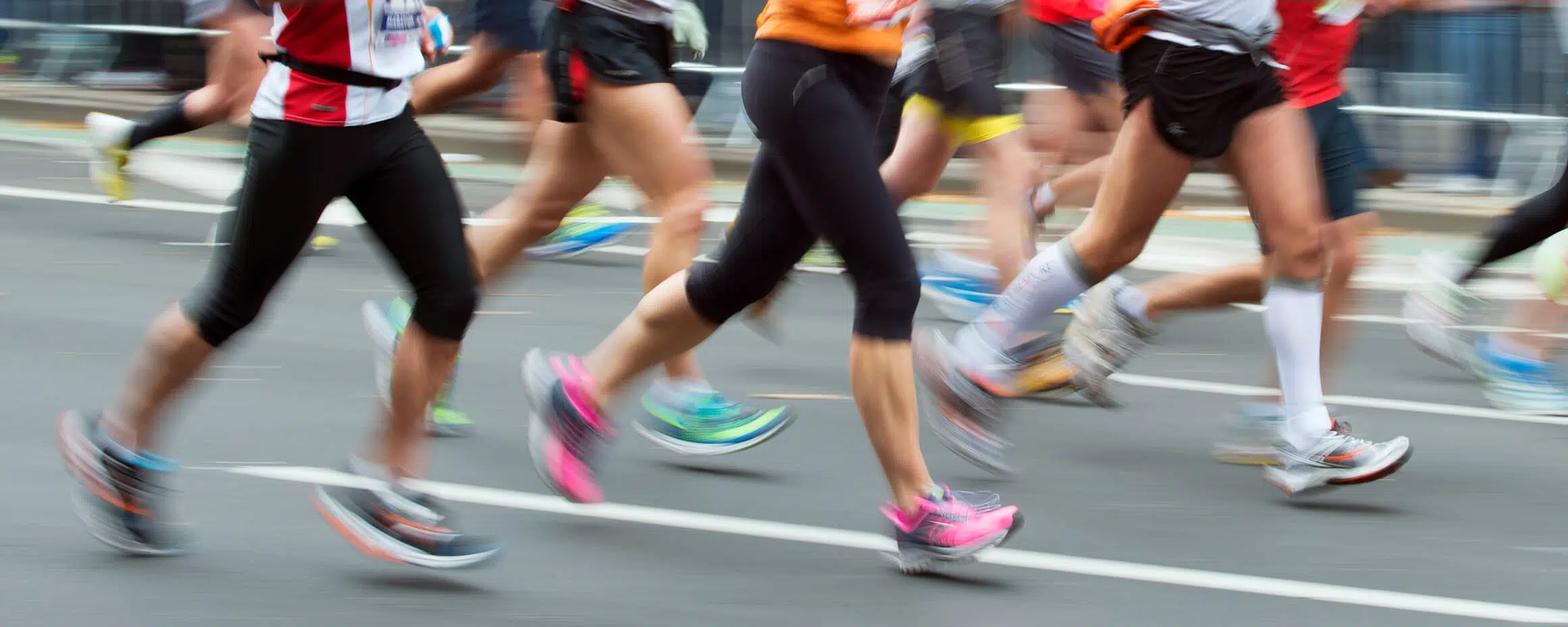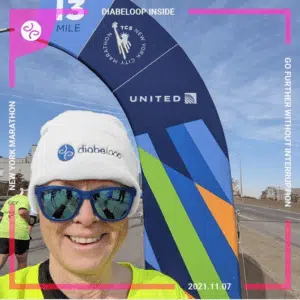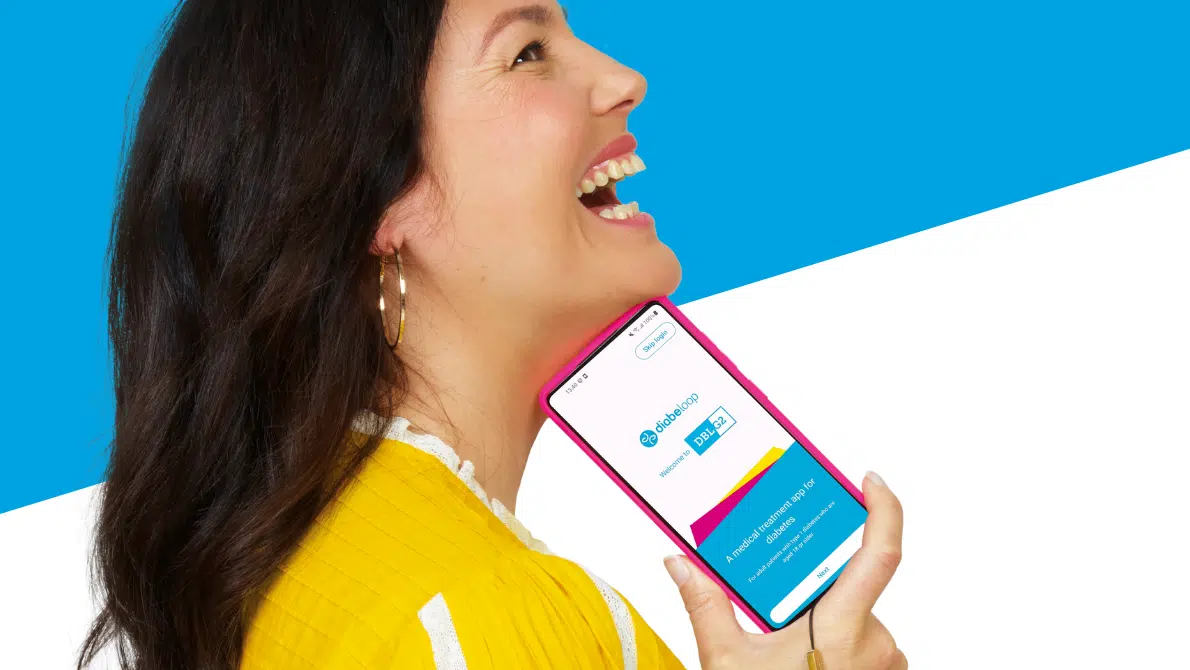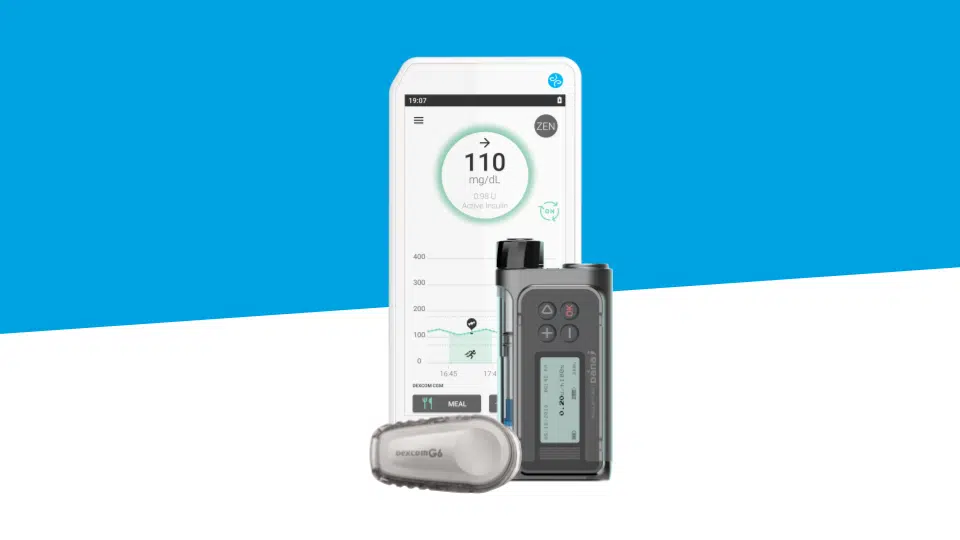
I Live With T1D And I Crossed The Finish Line Of A Marathon
|
Are You An Experienced Runner Or Were You A Super-Newbie Runner Before Your First Marathon?
As a young person before I was diagnosed with Type 1 diabetes, I was an occasional casual jogger. After diagnosis, and for quite a while, I found it difficult to practice intensive sports without having hypoglycemia, and that seemed counterproductive to me. At a certain point in my 40’s I reached a point where the risk of hypoglycemia was overridden by my desire to get fit. With some experimentation, I figured out how to modify my insulin and carb intake to compensate. I started by walking and when possible running with my dog 2 miles in the morning and 2 miles in the evening. That was sustainable and felt good.
Read more: Type 1 Diabetes And Sports: How To Exercise Safely?
Did You Use To Practice Sports? How Often And For How Long?
As a kid I was a competitive swimmer. For myself, I try to run 4-5 miles a few times during the work week in the evening, and one longer run on Saturday or Sunday morning. Each week leading up to the marathon the longer run gets longer by a mile or so. Then the last weeks before the marathon, it is important to taper down the miles to rest your body. It is really up to the individual to figure out what works best for them.
Read more : Diabetes And Swimming: All You Need To Know To Feel Confident In The Water This Summer
When And Where Did You Cross The Finish Line Of A Marathon For The First Time?
New York City marathon in 2013. I have tried to run it ever since, with my running team, Achilles International. Since then I have completed the NYC marathon 7 times and the Paris marathon once in 2018 with 2 American buddies.
Do You Prefer Running Or Power-Walking A Marathon?
A combination of both. It depends upon the glucose level at the moment. If glucose reaches 80 mg/dl and it is dropping, I walk until it starts to flatten out and also take a small amount of glucose. I run a moderate pace of what some might consider slow, 11 minutes a mile, during a race, because that helps stabilize my glucose level. I eat a glucose gel for running every 2 miles or so. The goal is to enjoy the race without having severe hypos while running. So far I have been able to accomplish that in every race. Each person has to experiment to learn what works for them during running.
How Was This First Experience?
Before the first one, I wasn’t even sure I was going to be able to run 26.2 miles. Once I entered Central Park, I realized, Yep, this is happening. A couple more miles to go and I will have completed the marathon, in spite of, or maybe because of having diabetes. Such a confidence booster to achieve a new goal you never thought possible. Instead of saying, “I could never run 26.2 miles” I proved to myself , “I can set challenging goals and achieve them, just like I did with that marathon.” That shift in mindset carries over from the physical accomplishment into the rest of my life.
Tell Us More About Your Last Marathon
November 7, 2021 was the 50th anniversary of the New York marathon, after 2 years, not counting 2020. The weather was perfectly clear, sunny, cool and a light breeze. There was a huge amount of anticipation and positive energy released on that day, because so many people in New York had been training for it over the last 2 years and others really love to watch and cheer on marathon day. They lined the streets to celebrate with signs that read “New York Is Back” and “New York 4Evah” and “Welcome Back Runners”. It was truly a celebration for the whole city that we can once again gather to hold big, open events with lots of people. To me it seemed there were more people along the sidelines than ever since 2013. It is a race that I will always want to run, and being a part of it is really an honor on its own. I ran it side-by-side with 2 of my friends, Kelsey and Zoe, who trained with me throughout the pandemic. I was able to keep my glucose level between 79 and 123 throughout the race.
November, 2020 due to COVID-19 was a virtual NYC marathon. It was odd, alone at home, being virtual, running around a loop in my neighborhood over and over again. The temperature got so cold, with freezing rain, that some of my devices stopped working properly and that was a challenge. Also my phone did not accurately record my mileage. It was just not the same without the excitement of the course, and felt kind of silly.
Read more: COVID-19: In Quarantine With Type 1 Diabetes
Let’s talk about you and marathons overall.
Why Did You Decide To Run A Marathon? What Are Your Objectives/Goals?
What inspires me to do this? I really like getting outdoors each day for some fresh air and to relax, and enjoy watching the change of seasons. I am inspired to train for marathons by my family, because I want to stay as healthy as long as I can to spend time with them. Most important of all, I run to counteract the increased health risks inherent to diabetes. Good circulation and cardiovascular health are so essential to overall fitness for people living with diabetes.
Are There Medical Tents? Did You Inform The Organization Teams About Your T1D Before Starting?
There are medical tents for people who have true medical emergencies. You have to be self-reliant and prepared for all of your own needs during the marathon. That said, on each bib there is a place where you can write down any medical conditions, drugs you take and allergies you have. Personally, I always wear a medic alert bracelet which has all of my medical information and a toll-free number to call for my emergency contacts.
What Are Your Best Memories?
So many. The little kids watching along the sidelines, who offer you high fives and pieces of their halloween candy. The funny costumes that runners wear. The guy who runs the marathon barefoot. The guy who juggles while running. Oh, and the signs that bystanders hold for the runners to read, one of my favorites is: “Seems like a long way to run for a free banana.” In Central Park there is always a guy dressed-up to look like God, holding a sign that reads “The End Is Near.”
What Are Your Personal “Mantra”?
One is “Moving Forward.” While I am running, I really feel free to “Leave it all behind.” Sometimes I imagine that I am “Running away from diabetes complications,” when I need to dig deep.
What Do You Want To Say To T1Ds Who:
> are thinking about running a marathon:
It is a big commitment of time. It requires regular running plus strength training on the non-running days, and time for stretching. Start by finding a local running group to train with, learn of new places to go for a hike or run. Running with others can be fun and motivating on those days when you otherwise may be tempted to just stay in bed.
> are hesitant:
Build up your confidence one mile at a time, remembering to recover by alternating days that you run, with days that you rest.
> think they are not capable of:
Training is more important than the race itself. You will find what is comfortable for you to do and build, as long as you enjoy it. Experiment with a shorter race distance to see how you react to being in a herd of thousands of people running around you. You may find it exhilarating and inspiring, or you may not like it. Whichever exercise motivates you will help you keep your body moving.
Anything Else You Want To Share With Us ?
In some ways, having Type 1 diabetes prepares you for the experience of running a marathon. You have to be prepared for managing the unexpected. I have developed a mindset of success in spite of minor setbacks along the way. I know I will overcome whatever comes my way. Having Type 1 diabetes means having to manage through whatever the day brings. It could be a stress or illness raising the glucose level. Or an unpredictably delayed meal. It could be insulin acting not as expected. Or skin irritation at the site where insulin was delivered. Maybe an issue with another product you rely upon just not responding as normal. Having to manage all of those variables is kind of similar to running a marathon. There are many factors in a marathon that you cannot control: the weather, the thousands of people around you, a course that is new to you, and just how rested you happen to be feeling that morning when you get up.








